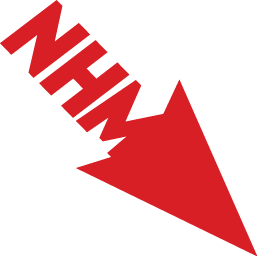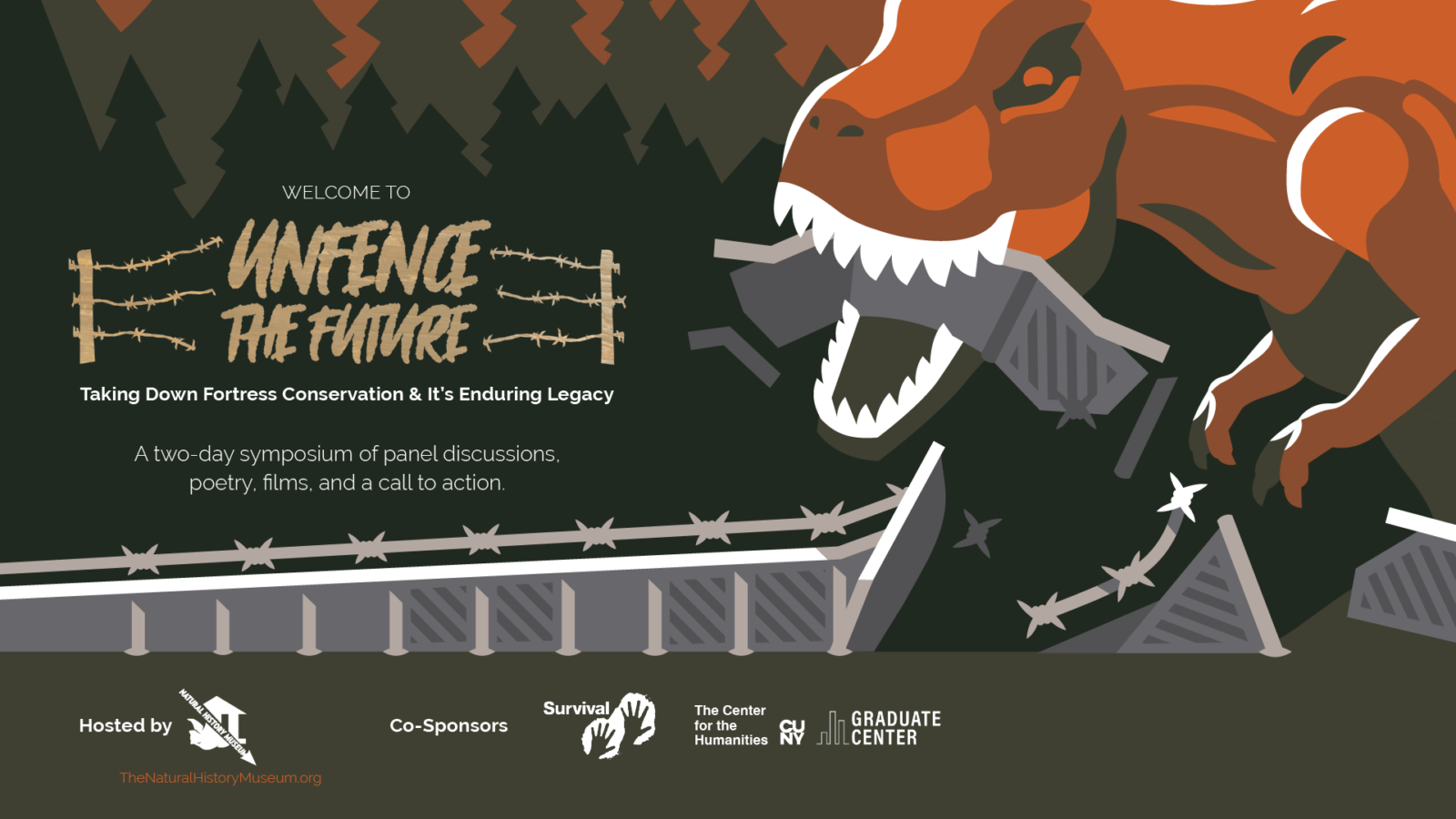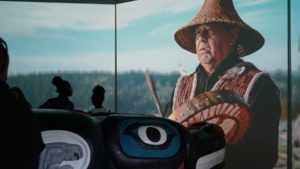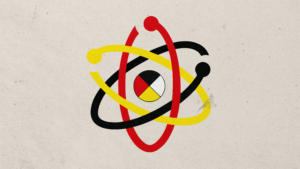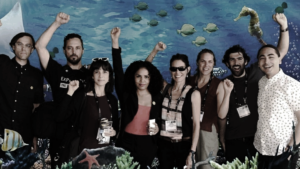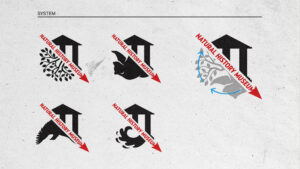From the founding of the first U.S. National Parks to the present day, communities across the country have been facing off against what some call “fortress conservation”—an approach to conservation that cordons off designated wilderness areas, expelling anything and anyone deemed a threat to ecological balance—from Indigenous Peoples to predator species.
This April, we assembled more than 20 community leaders, conservationists, legal scholars, geographers, historians, activists, and artists for Unfence the Future: Taking Down Fortress Conservation and Its Enduring Legacy, a free online symposium that explored the ways in which fortress conservation endures in U.S. federal law, conservation and historic preservation.
Unfence the Future doubled as a launch event for our Red Natural History initiative, which brings an inaugural cohort of Red Natural History Fellows together with communities, scientists, and scholars to unsettle the colonial logics imprinted in practices of historic preservation, science education, and conservation—and to chart a path forward.
Check out the highlights, video documentation, and Zoom chat transcripts below, as well as these resources and calls to action from our speakers.
Day 1
Highlights & Video Timestamps
The conference began with an Opening Blessing (00:00) and song by Sadie Olsen (Lummi), co-founder of Whiteswan Environmental, followed by some introductory remarks from The Natural History Museum.
Panel 1: Conservation-by-Dispossession (26:06) set the stage, exploring some fundamental questions about the origins of fortress conservation in the US. In a fast-paced conversation moderated by Ashley Dawson, historians Rosalyn LaPier (Blackfeet/Métis) and Karl Jacoby described the founding of Yosemite, Yellowstone, and other early US National Parks, exposing the interconnected histories of preservation and plunder in the earliest conservationist experiments in the United States.
During a short interlude, we screened The Sacred Remains (1:41:35), a short film by The Natural History Museum created at the height of the struggle at Standing Rock in 2016, which illuminates some of the deeper tensions at play in struggles to protect sacred places: a clash of irreconcilable ways of understanding and relating to the land, and what happens when the State’s perspective has been codified into federal law and the input of Tribal Nations as sovereigns is disregarded.
Panel 2: Indigenizing Conservation (1:57:39) brought together Standing Rock Tribal Historic Preservation Officer Jon Eagle Sr. (Hunkpapa Lakota), ecologist Melissa Nelson (Turtle Mountain Band of Chippewa Indians), and conservationist and farmer Jim Enote (Zuni). Moderated by Andrew Curley (Diné), the panel unpacked the ways of seeing, understanding, and relating to the land that have sustained Indigenous traditions of land stewardship despite the colonial efforts to eradicate them.
Day 2
Highlights & Video Timestamps
We kicked off Day 2 with an Opening Poem (00:00) by Cheyenne and Hudulgee Muscogee poet and Native American rights advocate Suzan Shown Harjo. The poem, titled “Sacred Ground,” is a tribute to the sacred relation to land held by Indigenous communities across North America—and to the struggles of Native Americans to protect their ancestral homelands from conquest, extraction, and exploitation.
Panel 3: Exterminating Extraction (24:15) brought together Apache Stronghold’s Wendsler Nosie Sr. (San Carlos Apache), Pueblo Action Alliance’s Julia Bernal (Sandia Pueblo/Yuchi-Creek), and Native Movement’s Enei Begaye (Diné/Tohono O’odham) to discuss their ongoing campaigns to halt industrial projects that are placing their sacred sites at risk. Moderated by Kai Bosworth, the discussion emphasized how contemporary struggles to protect sacred places come out of decades and even centuries of struggle between, on one side, the government and its corporate allies, who have been working together to extract maximum value from the land; and on the other, the Indigenous Nations who refuse to give up their lands and, as importantly, their cultural and spiritual relationships to the land.
During the break, Dena’ina Athabaskan artist and activist Ruth Łchav’aya K’isen Miller led the audience through a participatory exercise—a Meditation Through the Eyes of the Salmon (1:27:58)—before presenting some of her recent creative works that weave together the histories of violence inflicted on Alaska Native women and the salmon—whose lives have been deeply impacted by the longstanding and ongoing presence of extractive industries in the north.
Panel 4: Defending the Sacred in Law and Policy (1:54:35) explored the failures and limitations of federal policies to protect sensitive ecosystems and sacred places—as well the efforts of communities and legal-activists to overhaul them. A conversation between Judith LeBlanc (Caddo), Native Organizers Alliance Director, President Whitney Gravelle of the Bay Mills Indian Community, and Wesley Furlong, an attorney for the Native American Rights Fund, this panel emphasized the importance of Tribal sovereignty in contemporary struggles to defend the sacred in the federal courts.
For our final intermission, we screened From the Ancestors to the Grandchildren (3:00:38), a short film produced by The Natural History Museum with members of the Lummi Nation in 2018. The film introduces the ways of seeing, understanding, and relating to the land, water and air that guide the work of the House of Tears Carvers, a collective of carvers from the Lummi Nation.
Panel 5: Unfencing the Future for the Storms to Come (3:12:10) turned our conversation toward the future, bringing together Dina Gilio-Whitaker (Colville Confederated Tribes), Rueben George (Tsleil-Waututh), and Elizabeth Yeampierre to ask what it means to “unfence the future” in our age of climate catastrophe. Moderated by Billy Fleming, this wide-reaching conversation explored the role of education, community activism, and the development of renewable energy infrastructure in the building of a just transition beyond the extractive economy, revealing some key challenges we face in our shared struggle to build a world beyond extraction.
The symposium concluded with some Concluding Remarks (4:28:36) and a screening of I Am From Medicine People, a powerful video produced by Whiteswan Environmental.
This jam-packed symposium was far more than a critique of fortress conservation and its enduring legacy. It was a call to the conservation community to rethink the colonial logic it inherits—and to learn from the people and organizations that are modeling another way forward.
If there is one big take-away from last week’s convening, it is that this alternative does not need to be invented. It already exists. Our challenge is to see it, support it, and organize around it.
Stay tuned for more Red Natural History events from our Fellows over the next two years!
